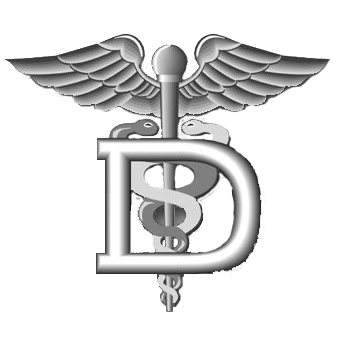Frequently Asked Questions
Q. How often should I brush and floss?
Brushing and flossing help control the plaque and bacteria that cause dental disease.
Plaque is a film of food debris, bacteria, and saliva that sticks to the teeth and gums. The bacteria in plaque convert certain food particles into acids that cause tooth decay. Also, if plaque is not removed, it turns into calculus (tartar). If plaque and calculus are not removed, they begin to destroy the gums and bone, causing periodontal (gum) disease.
Plaque formation and growth is continuous and can only be controlled by regular brushing, flossing, and the use of other dental aids.
Toothbrushing – Brush your teeth at least twice a day (especially before going to bed at night) with an ADA approved soft bristle brush and toothpaste.
- Brush at a 45 degree angle to the gums, gently using a small, circular motion, ensuring that you always feel the bristles on the gums.
- Brush the outer, inner, and biting surfaces of each tooth.
- Use the tip of the brush head to clean the inside front teeth.
- Brush your tongue to remove bacteria and freshen your breath.
Electric toothbrushes are also recommended. They are easy to use and can remove plaque efficiently. Simply place the bristles of the electric brush on your gums and teeth and allow the brush to do its job, several teeth at a time.
Flossing – Daily flossing is the best way to clean between the teeth and under the gumline. Flossing not only helps clean these spaces, it disrupts plaque colonies from building up, preventing damage to the gums, teeth, and bone.
- Take 12-16 inches (30-40cm) of dental floss and wrap it around your middle fingers, leaving about 2 inches (5cm) of floss between the hands.
- Using your thumbs and forefingers to guide the floss, gently insert the floss between teeth using a sawing motion.
- Curve the floss into a “C” shape around each tooth and under the gumline. Gently move the floss up and down, cleaning the side of each tooth.
Floss holders are recommended if you have difficulty using conventional floss.
Q. When should I take my child to the dentist for the first check-up?
The Professional Association of Pediatric Dentists recommends that a child be seen when his/her first tooth appears. Our office is capable of seeing your child at this time. At this visit, we will review correct oral hygiene, dietary considerations, and answer other questions parents may have about caring for their child’s teeth and mouth. Children usually begin their regular 6 month cleaning and exam cycles around age 3. Our staff is very skilled at caring for young children and loves to have them as part of our family practice.
Q. Are thumbsucking and pacifier habits harmful for a child’s teeth?
Thumb and pacifier sucking habits will generally only become a problem if they go on for a very long period of time. Most children stop these habits on their own, but if they are still sucking their thumbs or fingers past the age of three, a mouth appliance may be recommended by your pediatric dentist.
Q. I have a terrible fear of going to the dentist yet I know I need to. What should I do?
If you fear going to the dentist, you are not alone. Between 9% and 15% of Americans state they avoid going to the dentist because of anxiety or fear. The first thing you should do is talk with your dentist. In fact, if your dentist doesn’t take your fear seriously, find another dentist. The key to coping with dental anxiety is to discuss your fears with your dentist. Once your dentist knows what your fears are, he or she will be better able to work with you to determine the best ways to make you less anxious and more comfortable.
The good news is that today there are a number of strategies that can be used to help reduce fear, anxiety, and pain. These strategies include use of medications (to either numb the treatment area or sedatives or anesthesia to help you relax), use of lasers instead of the traditional drill for removing decay, application of a variety of mind/body pain and anxiety-reducing techniques (such as guided imagery, biofeedback, deep breathing, acupuncture, and other mental health therapies), and perhaps even visits to a dentophobia clinic or a support group.
Q. How safe are dental X-rays?
A. Exposure to all sources of radiation — including the sun, minerals in the soil, appliances in your home, and dental X-rays — can damage the body’s tissues and cells and can lead to the development of cancer in some instances. Fortunately, the dose of radiation you are exposed to during the taking of X-rays is extremely small.
Advances in dentistry over the years have lead to the low radiation levels emitted by today’s X-rays. Some of the improvements are new digital X-ray machines that limit the radiation beam to the small area being X-rayed, higher speed X-ray films that require shorter exposure time compared with older film speeds to get the same results, and the use of film holders that keep the film in place in the mouth (which prevents the film from slipping and the need for repeat X-rays and additional radiation exposure). Also, the use of lead-lined, full-body aprons protects the body from stray radiation (though this is almost nonexistent with the modern dental X-ray machines.) In addition, federal law requires that X-ray machines be checked for accuracy and safety every two years, with some states requiring more frequent checks.
